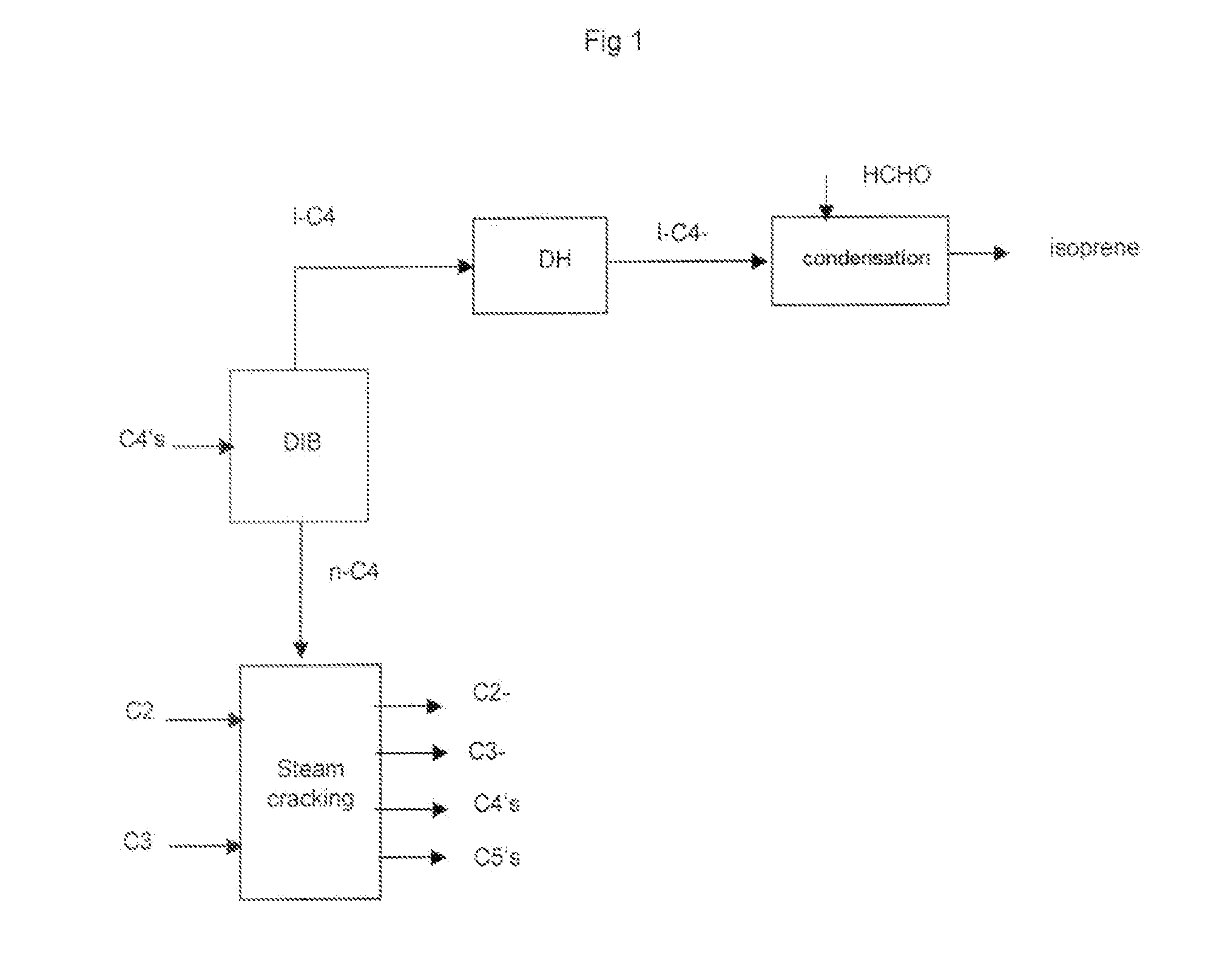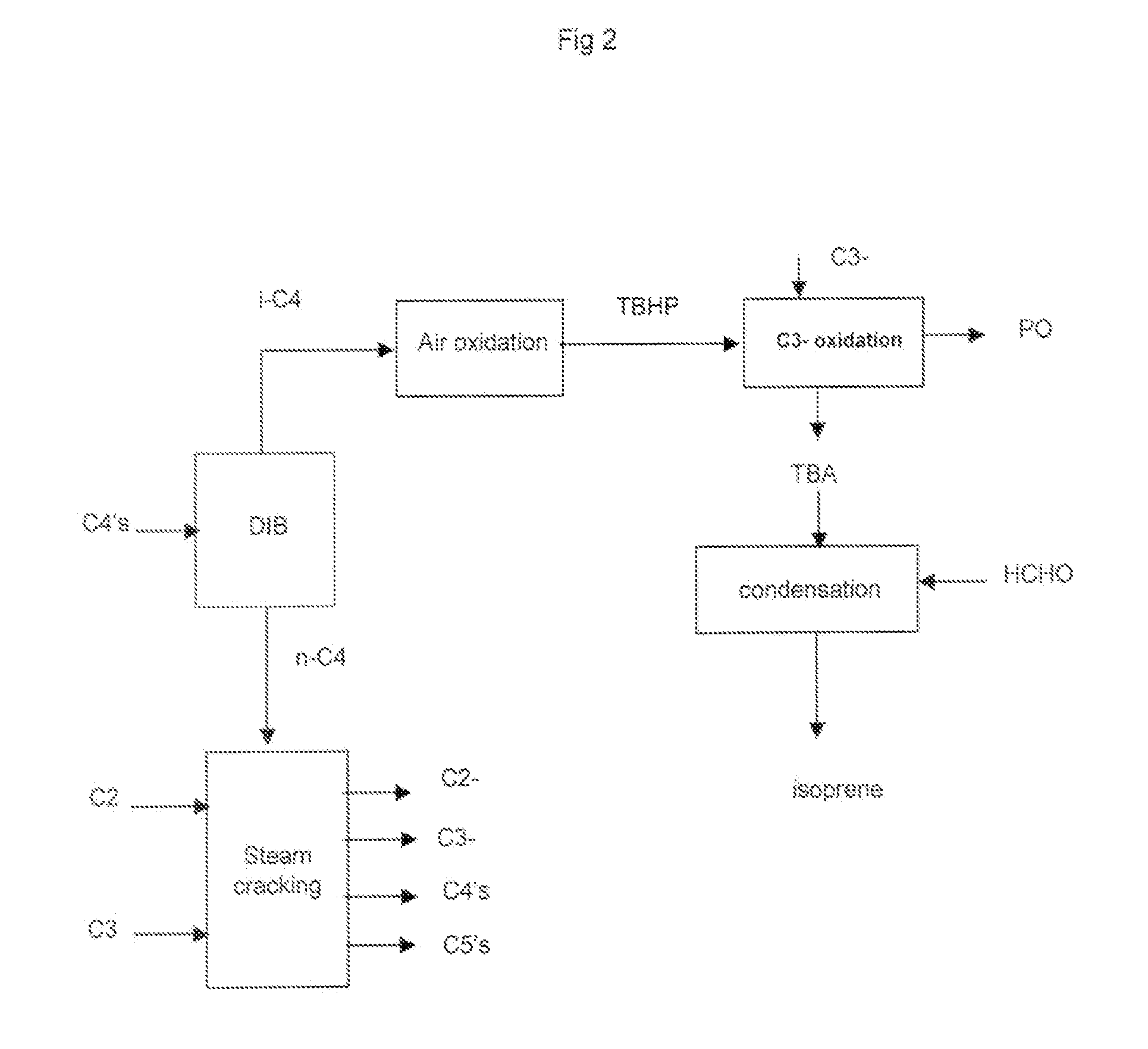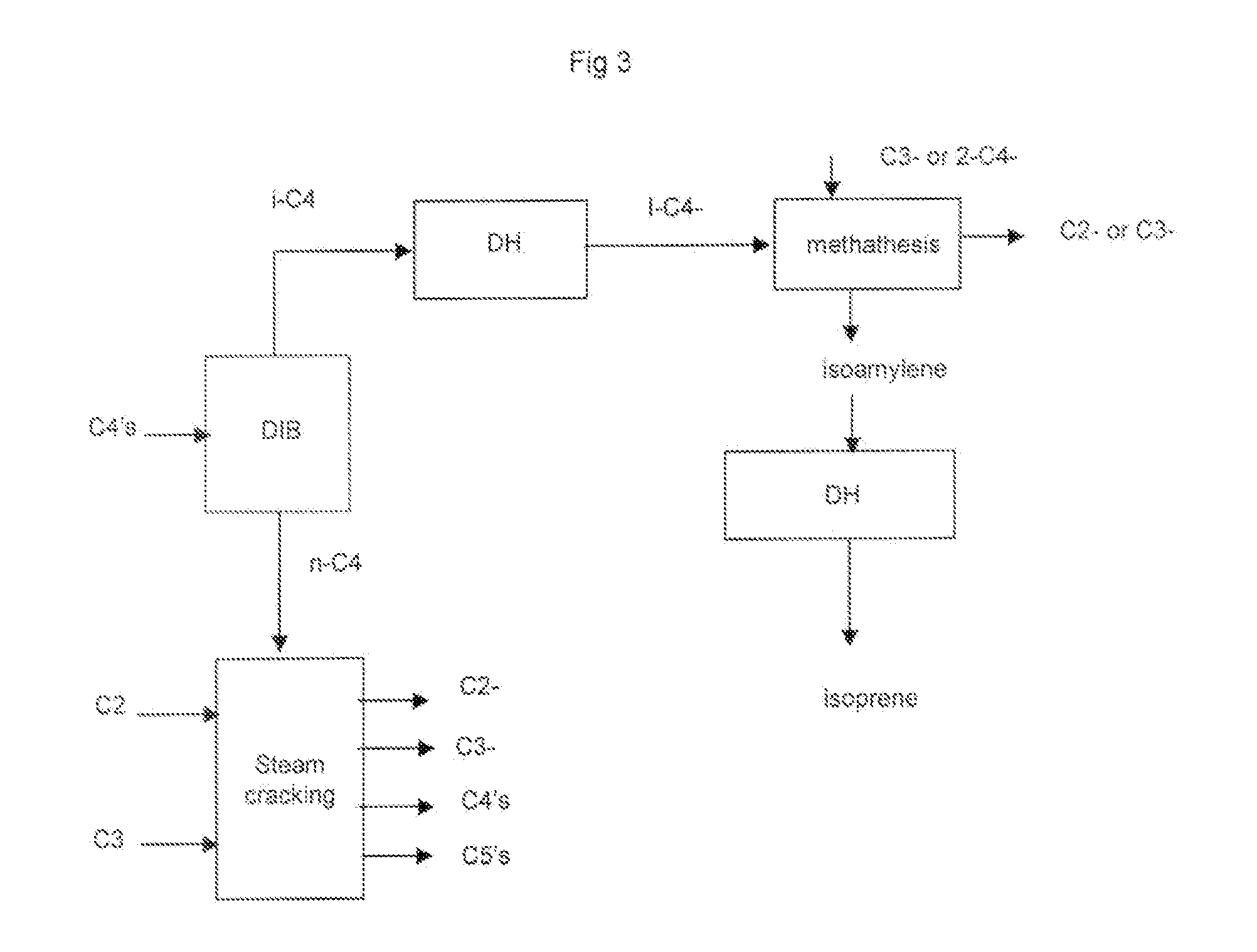Production of Light Olefins and Isoprene from Butane
a technology of isoprene and butane, which is applied in the direction of hydrocarbon by hydrocarbon cracking, chemistry apparatus and processes, organic chemistry, etc., to achieve the effects of high propylene yield, low ethylene yield, and high propylene yield
- Summary
- Abstract
- Description
- Claims
- Application Information
AI Technical Summary
Benefits of technology
Problems solved by technology
Method used
Image
Examples
Embodiment Construction
[0070]As regards steps a), b) and c) they are known per se. Of course ethylene and propylene are the main olefins, but there are C4 olefins such as 1-butene and 2-butene.
[0071]As regards step c) in a specific embodiment it comprises: treating said olefin rich stream of step b) in a separating section comprising:[0072]removing hydrogen and methane,[0073]recovering an ethylene stream,[0074]recovering an ethane stream and recycling said stream to the cracking zone,[0075]recovering a propylene stream,[0076]recovering a propane stream, optionally recycling said stream to the cracking zone,[0077]recovering a C4 stream,[0078]removing the heavies.
[0079]In another specific embodiment the above step c) is followed by a step c1) comprising:[0080]selectively hydrogenating the dienes and alkynes in the C4 stream produced in step c) into their corresponding olefins.
[0081]In another specific embodiment above step c) and step c1) are followed by a step c2) comprising:[0082]reacting by metathesis in...
PUM
| Property | Measurement | Unit |
|---|---|---|
| temperatures | aaaaa | aaaaa |
| thermodynamic | aaaaa | aaaaa |
| flexible | aaaaa | aaaaa |
Abstract
Description
Claims
Application Information
 Login to View More
Login to View More - R&D
- Intellectual Property
- Life Sciences
- Materials
- Tech Scout
- Unparalleled Data Quality
- Higher Quality Content
- 60% Fewer Hallucinations
Browse by: Latest US Patents, China's latest patents, Technical Efficacy Thesaurus, Application Domain, Technology Topic, Popular Technical Reports.
© 2025 PatSnap. All rights reserved.Legal|Privacy policy|Modern Slavery Act Transparency Statement|Sitemap|About US| Contact US: help@patsnap.com



